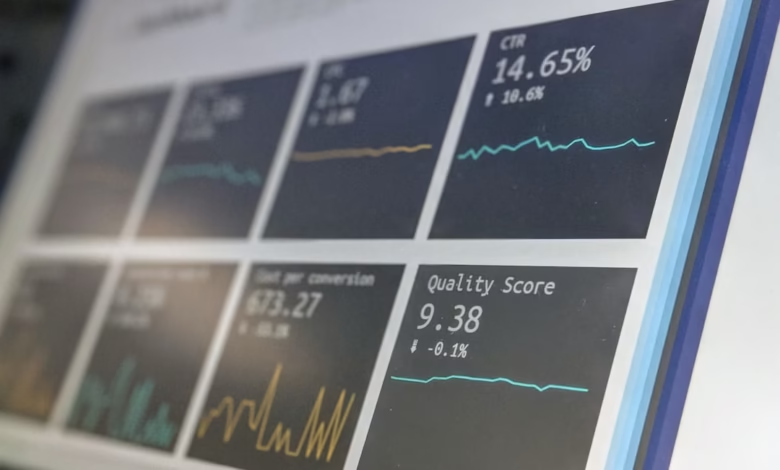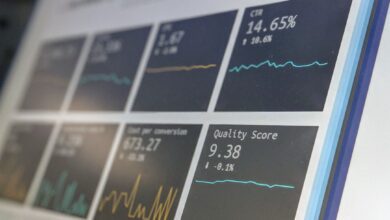Mastering Futures Trading: Strategies, Comparisons, and Market Analysis for Success in 2024

Futures trading has become an essential part of the financial landscape, allowing investors to engage in contracts for the delivery of assets at a future date. As a subset of derivatives trading, futures contracts enable traders to speculate on the price movements of commodities, indices, and other assets without requiring the physical ownership of the underlying items. With the rise of online trading platforms, futures trading has gained popularity among various trading styles, including day trading, swing trading, and even algorithmic trading.
In this article, we will explore the intricacies of futures trading, covering everything from the fundamental principles of derivatives and market analysis to effective trading strategies and risk management techniques. We will also compare futures trading with other forms of trading, such as stock trading, forex trading, and options trading, to provide a comprehensive understanding of how these markets interact. Whether you are a seasoned trader or a newcomer looking to expand your trading portfolio, this guide will equip you with the knowledge to navigate the futures market confidently. Join us as we delve into the fascinating world of futures trading and discover how to leverage its potential for your investment strategies.
- 1. Understanding Futures Trading: A Comprehensive Guide to Derivatives and Market Analysis
- 2. Navigating the Futures Market: Trading Strategies, Risk Management, and Technical Analysis
- 3. Comparing Futures Trading with Other Forms: Insights into Stock Trading, Forex Trading, and Options Trading
1. Understanding Futures Trading: A Comprehensive Guide to Derivatives and Market Analysis
Futures trading is a critical component of derivatives trading, providing investors with a way to speculate on the future price movements of various assets, including commodities, stocks, indices, and cryptocurrencies. Understanding the mechanics of futures trading is essential for both novice and experienced traders who wish to navigate this complex market successfully.
At its core, futures trading involves contracts that obligate the buyer to purchase, or the seller to sell, an asset at a predetermined price at a specified future date. This financial instrument is widely used in commodities trading, where traders can hedge against price fluctuations in physical goods like oil, gold, and agricultural products. Additionally, futures contracts are prevalent in stock trading and forex trading, enabling traders to leverage their positions and maximize potential returns.
One of the key advantages of futures trading is the ability to use leverage, which allows traders to control larger positions with a relatively small amount of capital. However, this also increases the risk, making effective risk management crucial. Traders must understand their risk tolerance and implement strategies to mitigate potential losses, especially in high-volatility environments common in markets such as crypto trading and energy trading.
Market analysis is another vital aspect of futures trading. Both technical analysis and fundamental analysis play significant roles in developing trading strategies. Technical analysis involves examining historical price data and chart patterns to forecast future price movements, while fundamental analysis focuses on economic indicators and market news that can impact asset prices. Successful traders often combine these approaches to refine their trading strategies, whether they engage in day trading, swing trading, or scalping.
Moreover, trading psychology cannot be overlooked. Emotional discipline is essential in futures trading, as market conditions can fluctuate rapidly. Traders should be aware of common psychological pitfalls, such as overtrading or succumbing to fear and greed, which can derail even the best-laid trading plans.
In the modern trading landscape, online trading platforms provide access to various futures markets and enable traders to implement sophisticated strategies, including algorithmic trading and copy trading. These platforms often support multiple asset classes, including ETFs and CFDs, allowing for a diversified approach to trading.
In conclusion, understanding futures trading involves grasping the principles of derivatives, leveraging market analysis techniques, applying effective risk management, and cultivating the right trading psychology. By mastering these elements, traders can develop robust trading strategies that enhance their chances of success in the dynamic world of futures trading.
2. Navigating the Futures Market: Trading Strategies, Risk Management, and Technical Analysis
Navigating the futures market requires traders to adopt a multifaceted approach that encompasses trading strategies, risk management, and technical analysis. Futures trading offers a dynamic environment where traders can speculate on the future price movements of various assets, ranging from commodities to financial indices.
One of the primary strategies employed in futures trading is day trading, where traders capitalize on short-term price movements within the market. This approach requires a keen understanding of market analysis, as traders must quickly interpret data to make informed decisions. Swing trading, on the other hand, allows for a longer holding period, enabling traders to capture larger price movements over several days or weeks.
For those looking to engage in more sophisticated techniques, algorithmic trading and high-frequency trading provide an edge by utilizing computer algorithms to execute trades at rapid speeds. These methods can significantly enhance the efficiency of trading, especially in volatile markets. Additionally, copy trading and social trading have emerged as popular strategies, allowing less experienced traders to mimic the trades of successful investors.
Risk management is crucial in futures trading, as the potential for loss can be substantial. Traders often employ leverage trading and margin trading to amplify their positions, but this also increases risk. Implementing robust risk management strategies, such as setting stop-loss orders and diversifying portfolios across various asset classes, is essential to protect against significant losses.
Technical analysis plays a vital role in futures trading by providing insights into price trends and market behavior. Traders use various indicators, such as moving averages and relative strength index (RSI), to gauge market sentiment and identify potential entry and exit points. Fundamental analysis also complements this by assessing the economic factors that could impact asset prices, especially in commodities trading and energy trading sectors.
Ultimately, trading psychology is a significant factor in navigating the futures market. Understanding one's emotional responses to market fluctuations is key to maintaining discipline and making rational decisions. By combining effective trading strategies with sound risk management practices and thorough market analysis, traders can enhance their chances of success in the competitive world of futures trading.
References:
– Investopedia. (2023). Futures Trading. Retrieved from [Investopedia](https://www.investopedia.com/terms/f/futures.asp)
– CME Group. (2023). Trading Strategies. Retrieved from [CME Group](https://www.cmegroup.com/education/trading-strategies.html)
– Trading Psychology. (2023). Psychology in Trading. Retrieved from [Trading Psychology](https://www.tradingpsychology.com/)
3. Comparing Futures Trading with Other Forms: Insights into Stock Trading, Forex Trading, and Options Trading
Futures trading is just one of many trading strategies available in today’s financial markets. When comparing it to other forms of trading, such as stock trading, forex trading, and options trading, several key distinctions and similarities arise.
Futures trading involves contracts that obligate the buyer to purchase, and the seller to sell, an asset at a predetermined price on a specified future date. This allows traders to speculate on the future price movements of various assets, including commodities and indices, providing opportunities for profit through the use of leverage. In contrast, stock trading typically involves buying and selling shares of publicly traded companies, focusing on long-term growth or short-term gains through strategies like day trading or swing trading.
Forex trading, on the other hand, revolves around the exchange of currency pairs, making it the most liquid market in the world. Traders in this market employ various strategies, including scalping and algorithmic trading, to capitalize on small price fluctuations. Futures trading can sometimes resemble forex trading in terms of leverage and the potential for significant returns, but it generally involves different types of assets and market dynamics.
Options trading introduces further complexity, offering traders the right, but not the obligation, to buy or sell an asset at a predetermined price before a specific expiration date. This flexibility can enhance risk management strategies, allowing traders to hedge against losses in their portfolio. While both futures and options are considered derivatives trading, the mechanics and risk profiles differ significantly.
In addition to these traditional forms of trading, newer trends such as crypto trading and social trading are gaining traction. Crypto trading involves the buying and selling of digital currencies, which can be highly volatile and speculative. Social trading platforms allow traders to mimic the strategies of experienced investors, providing a unique approach to risk management and trading psychology.
Understanding the nuances between these trading forms is crucial for developing effective trading strategies. Traders should consider their risk tolerance, market analysis techniques (both fundamental and technical), and the psychological aspects of trading before choosing a particular path. By doing so, they can better navigate the complexities of the trading landscape, whether through futures, stocks, forex, or options, ultimately leading to more informed decisions and potentially greater success in their trading endeavors.
In conclusion, futures trading offers a dynamic avenue for investors looking to engage in derivatives trading with the potential for substantial returns. By understanding the fundamental principles of futures contracts and effectively navigating the complexities of the futures market, traders can implement robust trading strategies that align with their financial goals. Whether you are interested in commodities trading, index trading, or exploring high-frequency trading tactics, mastering risk management and technical analysis is essential for success.
As we compared futures trading with stock trading, forex trading, and options trading, it becomes evident that each market has its unique characteristics and opportunities. Strategies such as day trading, swing trading, and scalping can be adapted to futures markets, allowing traders to capitalize on price movements and volatility. Additionally, the rise of online trading platforms has made it easier than ever to engage in trading, whether through algorithmic trading, copy trading, or social trading.
Ultimately, a thorough understanding of trading psychology and fundamental analysis can empower traders to make informed decisions in the fast-paced world of futures trading. By leveraging the insights gained from this comprehensive guide, you can embark on your trading journey with confidence, harnessing the power of futures to enhance your portfolio.





